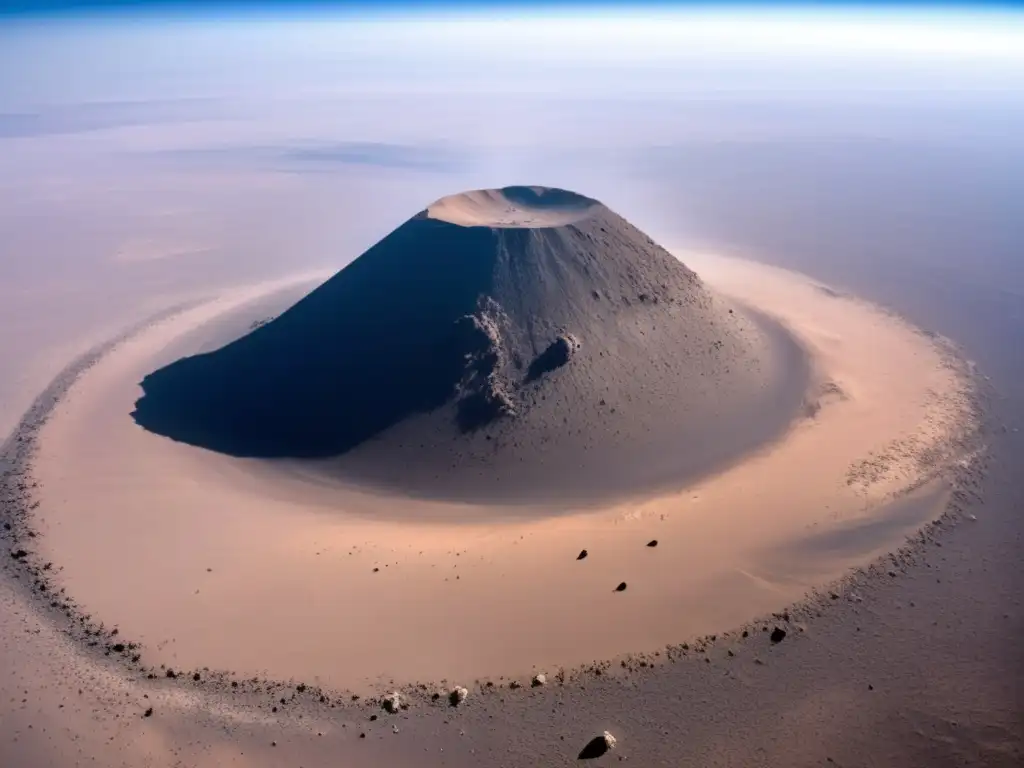2008 TC3: The Asteroid That Rained Over Sudan

Introduction
In October 2008, an asteroid fell to Earth, creating a buzz in the scientific community. Dubbed as 2008 TC3, this celestial object made headlines due to its unique journey from space to the surface of our planet. What makes 2008 TC3 so interesting is that it is one of the few asteroids that have been predicted and observed before impacting Earth. Let's explore the circumstances around 2008 TC3 and what we can learn from this rare event.
Discovering 2008 TC3

The Discovery
2008 TC3 was first detected through the Catalina Sky Survey on October 6, 2008. This survey is designed to search for near-Earth objects, including asteroids and comets that could potentially collide with Earth. 2008 TC3 was identified as a small asteroid, estimated to be about 4.5 meters (14 feet) in diameter, and classified as a stony meteorite or an ordinary chondrite.
The Trajectory
After 2008 TC3 was discovered, astronomers calculated its orbit and predicted where it would land. The trajectory of 2008 TC3 was unusual, in that it was going to approach Earth from a low angle on the horizon. This approach angle made it easier to observe and predict where it would impact. It was also predicted that 2008 TC3 would strike our planet just 19 hours after it was initially discovered.
The Impact
On October 7, 2008, 2008 TC3 entered Earth's atmosphere over Sudan, Africa. The asteroid disintegrated in the air, creating a fireball that was visible to the local population. The energy from the impact was estimated to be equivalent to 0.9 kilotons of TNT, making it a small explosion. The resulting fragments of 2008 TC3 created a strewn field of meteorites over the Nubian Desert.
The Significance of 2008 TC3

A Rare Opportunity for Study
2008 TC3 is significant because it is one of the few asteroids that have been observed and predicted before impacting Earth. This allowed astronomers to study the asteroid in situ, which means in its natural location. By examining the fragments of 2008 TC3, scientists were able to learn more about the composition and structure of asteroids. They found that 2008 TC3 is an ordinary chondrite, similar to other meteorites found on Earth. These meteorites are thought to be remnants of the early solar system, providing clues about how our solar system formed.
Testing Our Predictions
The prediction and observation of 2008 TC3 holds great significance in the field of astronomy. It demonstrated that we can identify and track asteroids before they collide with Earth. This not only allows us to take preventive measures to protect our planet but also provides a unique opportunity to study these celestial objects in their natural environment. We can test our predictions and improve our understanding of the behavior and movement of asteroids in our solar system.
A Step Towards Asteroid Defense
Studying 2008 TC3 has also helped us in developing strategies for defending our planet against asteroids. By observing and predicting the trajectory of asteroids, we can take defensive measures to deflect or destroy them before they hit Earth. With the increasing number of near-Earth objects being discovered, it is crucial that we develop methods to protect our planet against potential collisions.
Frequently Asked Questions

-
How big was 2008 TC3?
2008 TC3 was estimated to be about 4.5 meters (14 feet) in diameter.
-
Where did 2008 TC3 impact?
2008 TC3 impacted over Sudan, Africa.
-
What was the significance of studying 2008 TC3?
Studying 2008 TC3 allowed us to learn more about the composition and structure of asteroids, test our predictions, and develop strategies for defending our planet against potential collisions.
-
What is an ordinary chondrite?
An ordinary chondrite is a type of stony meteorite that is thought to be a remnant of the early solar system. They are similar to other meteorites found on Earth.
-
How can we protect our planet against potential asteroid collisions?
We can develop defensive measures, such as deflecting or destroying asteroids before they hit Earth, by observing and predicting their trajectory.
Conclusion
The discovery and study of 2008 TC3 have provided valuable insights into the behavior and movement of asteroids in our solar system. It has also shown us that we can identify and track asteroids before they collide with Earth, providing us with an opportunity to test our predictions and develop strategies for defending our planet against potential collisions. As we continue to explore our universe and discover new celestial objects, 2008 TC3 will remain a significant event in the history of asteroid research.
We hope this article has been informative and insightful. If you have any questions or comments, please feel free to share them below. Thank you for reading www.asteroidrealm.com!
Additional Resources

- NASA - Small Asteroid 2008 TC3 Discovered With Help of Automated Telescopes
- Scientific American - Fragments of a meteorite fall in Sudan
- Space.com - Asteroid 2008 TC3: Earth Impact
 Uncovering The First Asteroid: Ceres And Its Discoverer, Piazzi
Uncovering The First Asteroid: Ceres And Its Discoverer, Piazzi Vesta: The Brightest Asteroid And Olav Olmsted’s Discovery
Vesta: The Brightest Asteroid And Olav Olmsted’s Discovery Tracking The Trails Of Trojans: Shared Orbit Asteroids
Tracking The Trails Of Trojans: Shared Orbit AsteroidsIf you want to discover more articles similar to 2008 TC3: The Asteroid That Rained Over Sudan, you can visit the Asteroid Discoveries category.
Leave a Reply

Articulos relacionados: